40 foot containers are a great option when you need to store larger equipment or many items and do not plan on moving the container. They come in two sizes: standard and high cube. 40' standard containers are 8' 6" high and high cubes, or 40' high cubes, are 9' 6" high. Pricing is usually similar, so it is helpful to always ask for both prices.
40' standard containers are great if you plan on moving them around. They can be moved on a regular flat-bed truck. 40' high cubes are over-height on a standard flat-bed truck.
40' high cube containers tend to be more popular than 40' standard containers. High cubes are a foot taller, thus providing more space. The other benefit is that in some markets, the 40' high cube containers are cheaper than 40' standards. There tend to be more 40' high cubes in use for commercial shipping—a trend that is only growing.
40' cargo containers are great for storing documents, inventory, equipment, feed, etc. They can easily be converted into a workshop to provide both storage and protection from the elements. Go one step further and set up two containers with a roof between them for additional storage and workspace.
If you are building a container home, 40's are going to give you the best value. In particular, we recommend the 40' high cube. With an interior height that is just shy of 8'10”, you have enough room to insulate the container and still have a normal-height ceiling. 40' standard containers are just shy of 7'10”, which can feel a bit cramped after insulation.
Here are the basic specifications for 40’ containers. While there may be some slight variations from container to container, this is a general rule of thumb.
| What? | Length | Width | Height |
| Exterior Size | 40' | 8' | 8.5' |
| Interior Size | 39' 5.5" | 7' 8.5" | 7' 9.75" |
| Door Size | NA | 7' 8.25" | 7' 5.75" |
While there may be some slight variations from container to container, this is a general rule of thumb.
Here are the basic specifications for 40’ containers. While there may be some slight variations from container to container, this is a general rule of thumb.
| Max. Gross | Tare | Net |
| 67,200 lbs | 8,820 lbs | 58,380 lbs |
Max. Gross: The weight of the full container including both the container and the contents
Tare: The empty weight of the container
Net: The weight capacity (Max. Gross minus Tare)
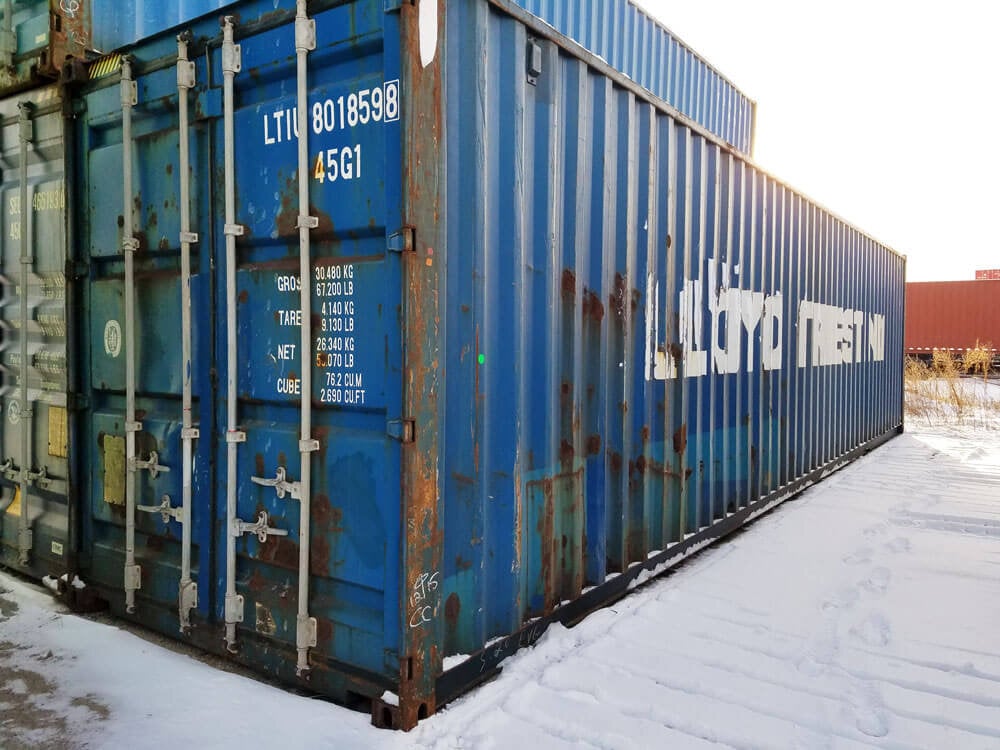
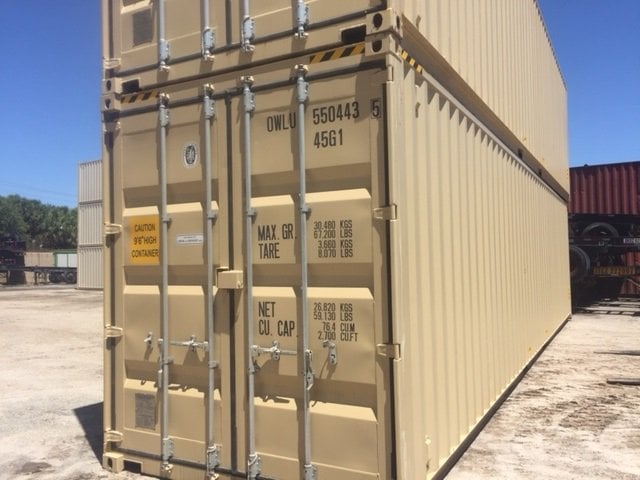
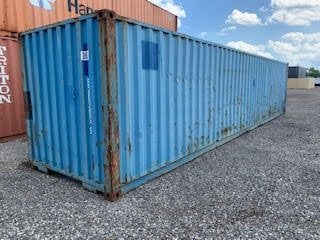
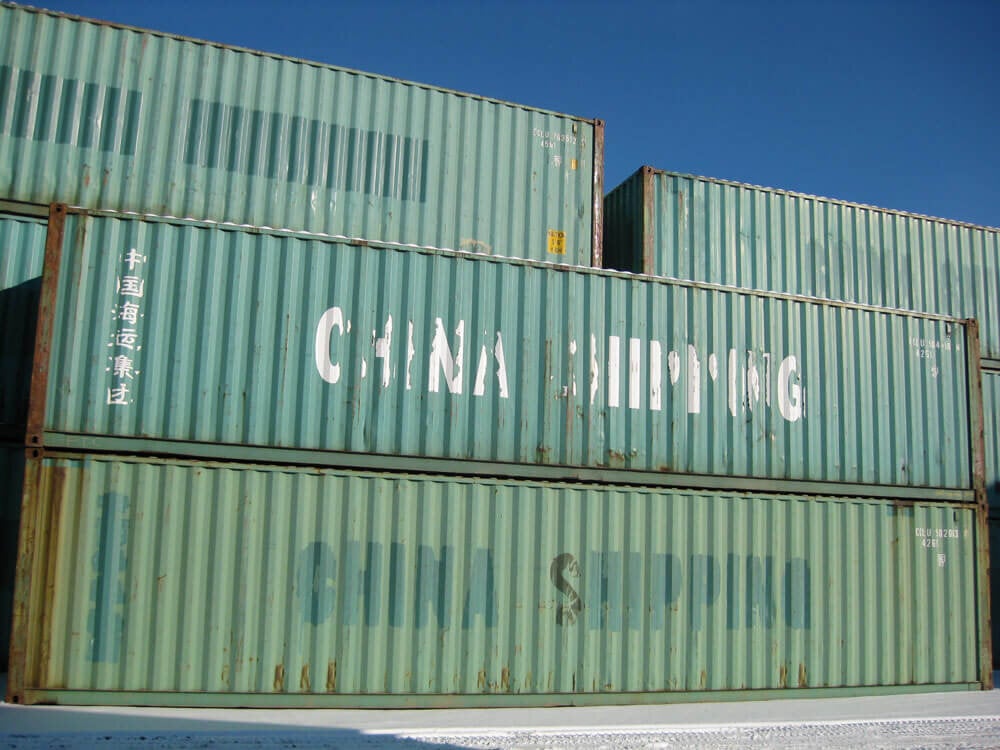
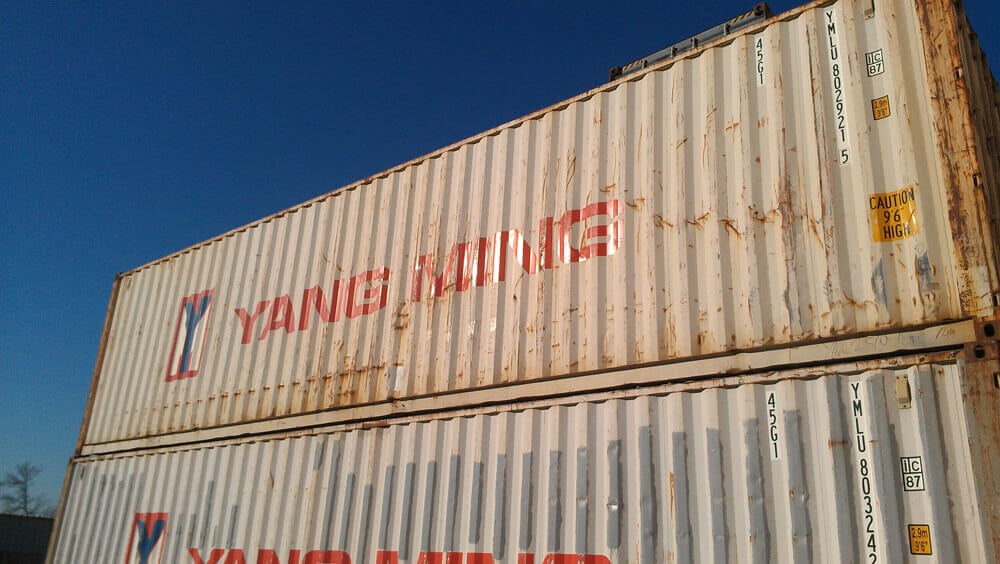
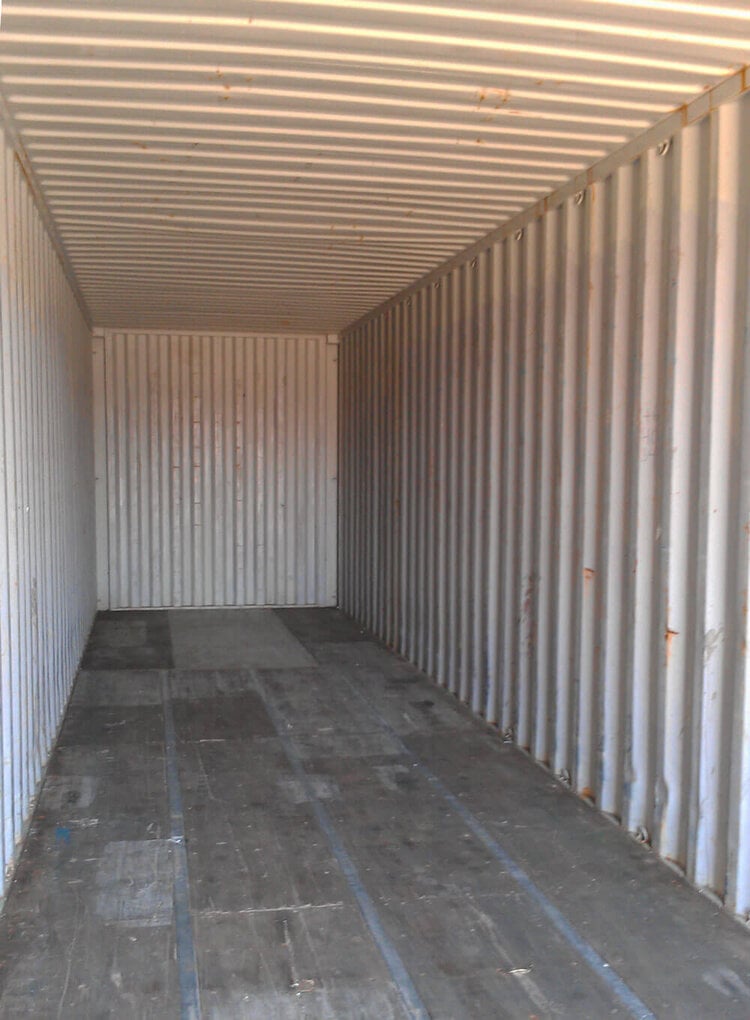
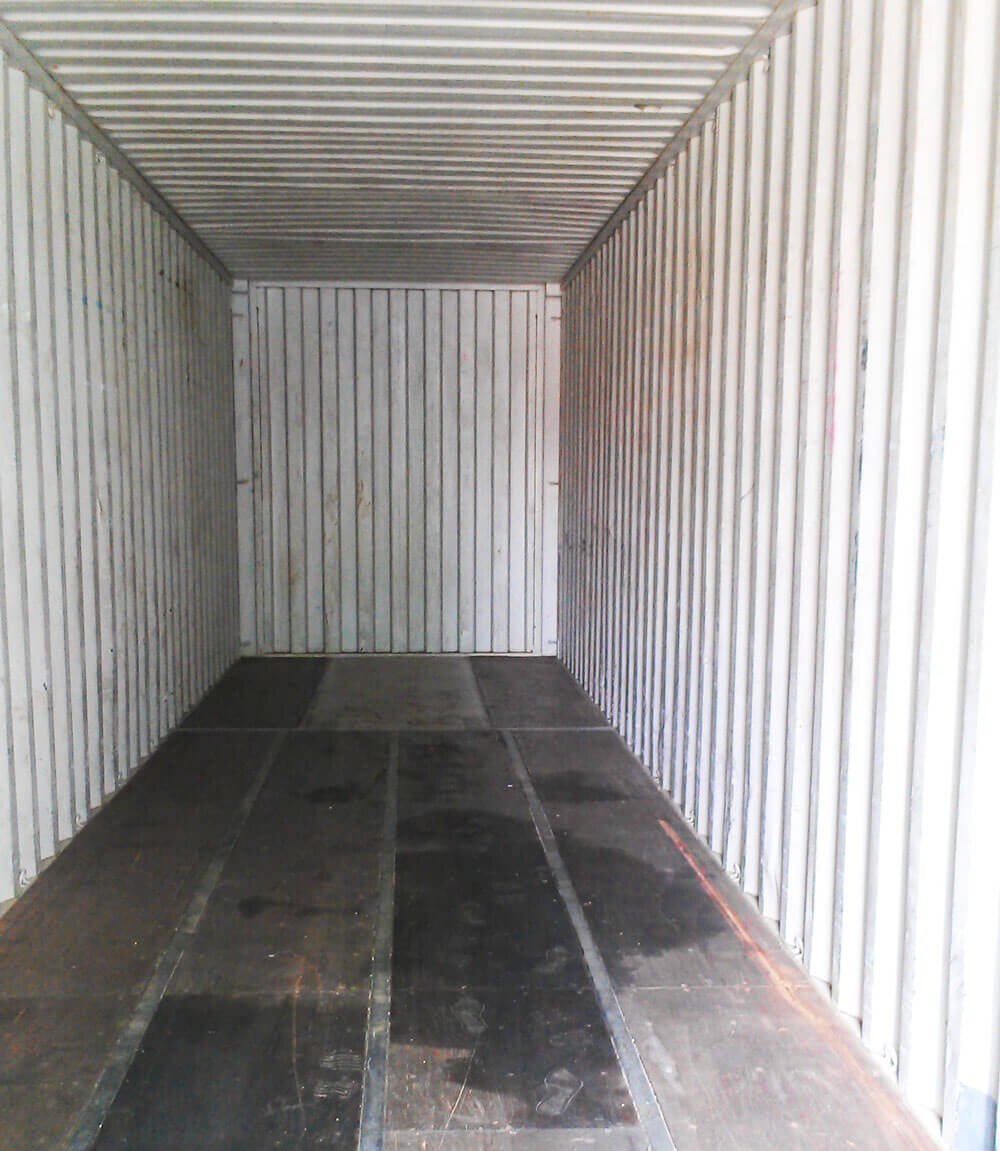
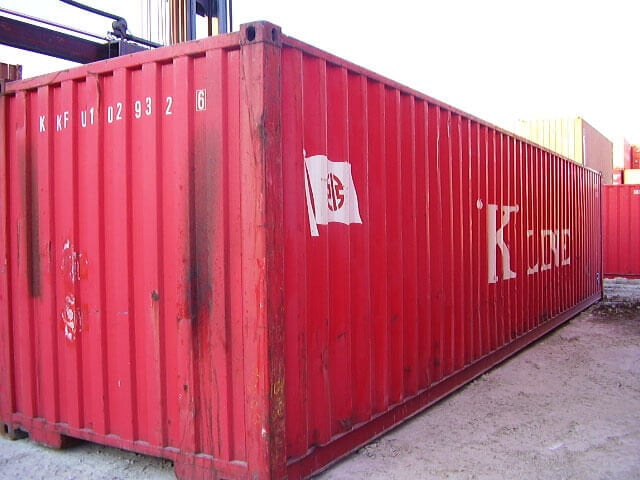
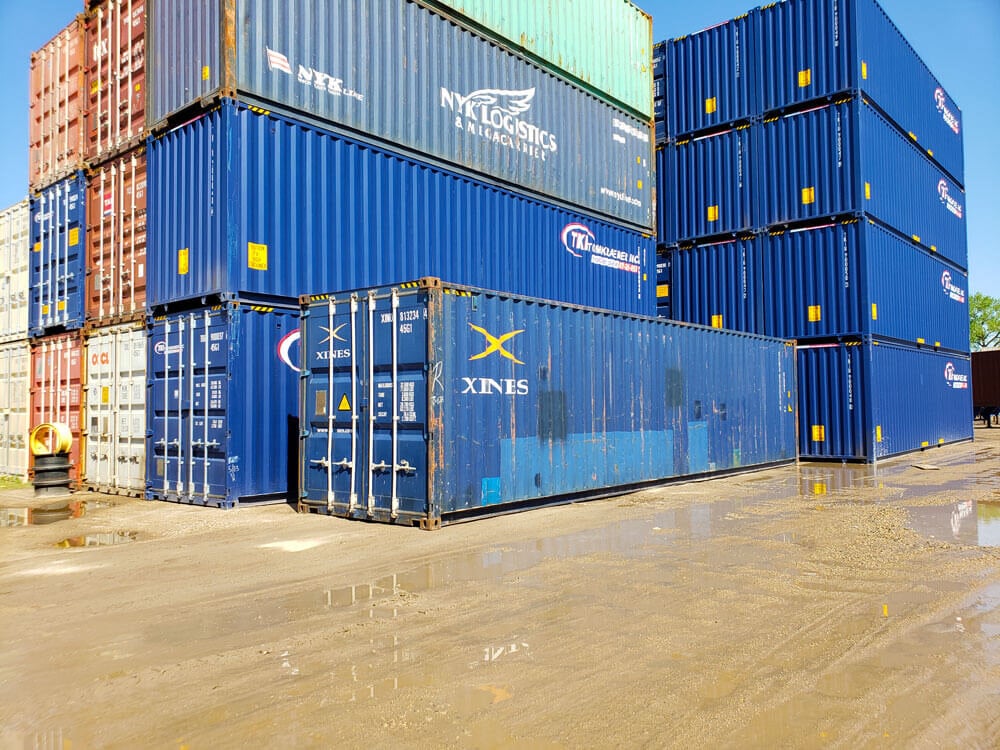
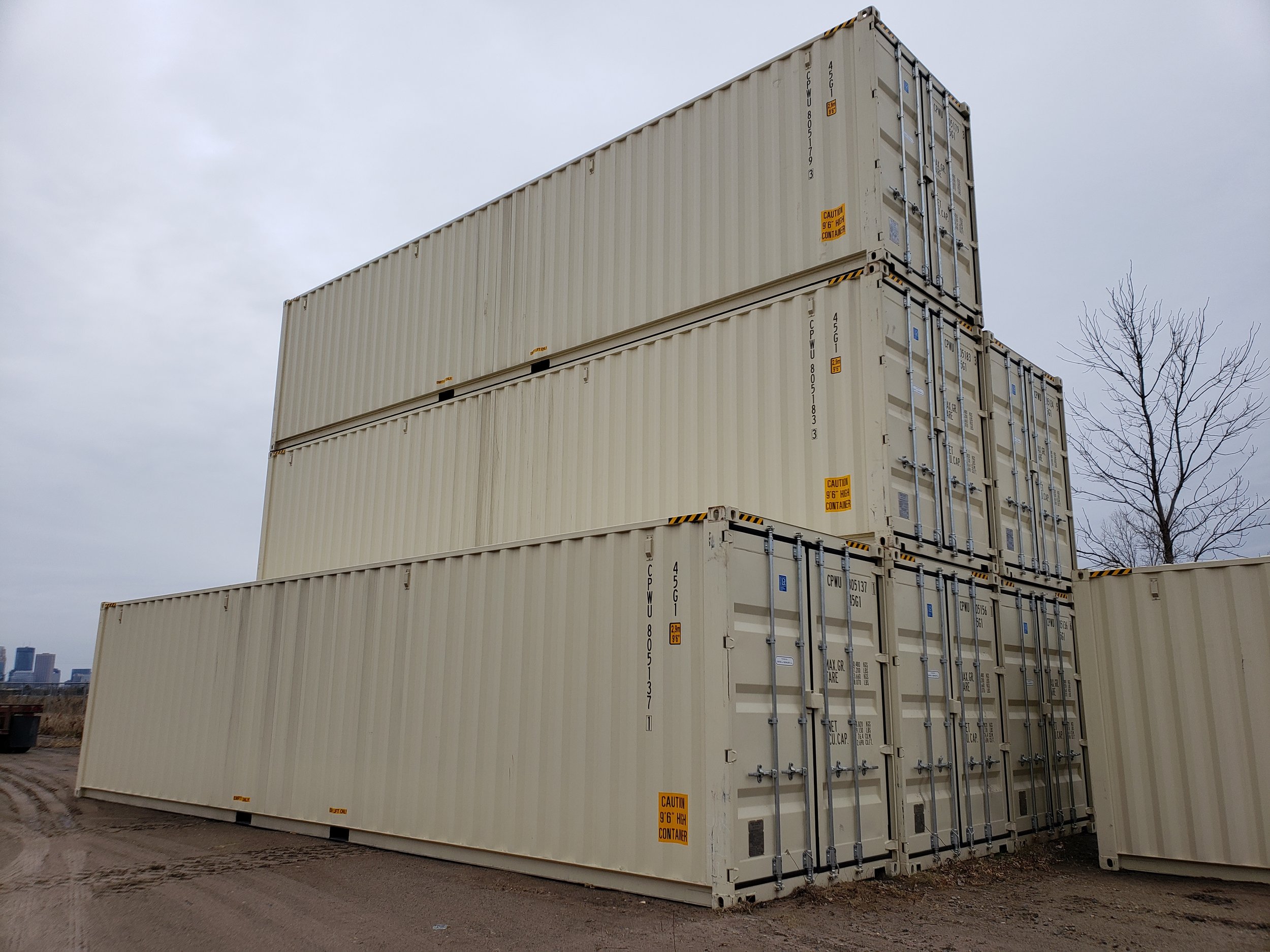










If you are not sure what size or condition you are interested in, let us know. We can help you figure out what will meet your needs best. We can help you determine the right size, condition, modifications, paint and other options to ensure you get the right container for you. You can also visit our frequently asked questions page.